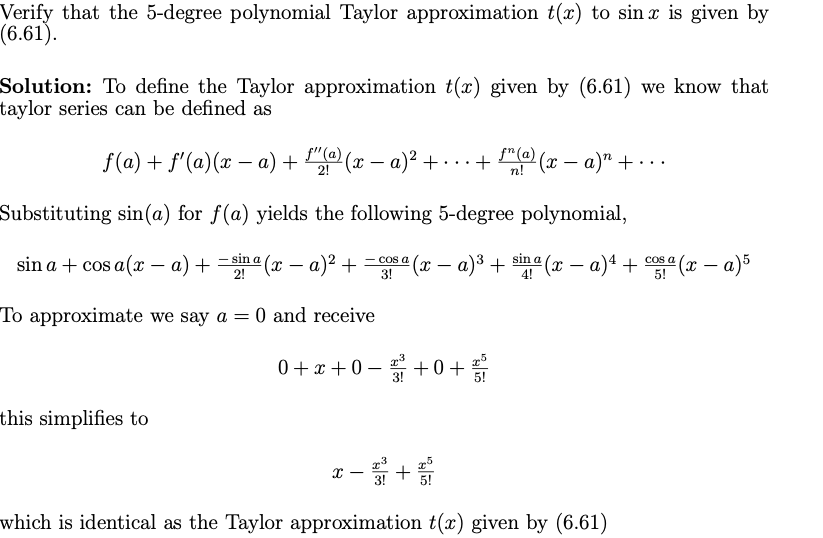Answered step by step
Verified Expert Solution
Question
1 Approved Answer
CAS means computer algebra system u(x)=0.98762x-0.155271x^3+0.00564312x^5 Here is u(x) and t(x) Again, using a CAS, find ||u(I) - sin :|| and ||t(1) - sin x
CAS means computer algebra system

u(x)=0.98762x-0.155271x^3+0.00564312x^5
 Here is u(x) and t(x)
Here is u(x) and t(x)
Step by Step Solution
There are 3 Steps involved in it
Step: 1

Get Instant Access to Expert-Tailored Solutions
See step-by-step solutions with expert insights and AI powered tools for academic success
Step: 2

Step: 3

Ace Your Homework with AI
Get the answers you need in no time with our AI-driven, step-by-step assistance
Get Started


